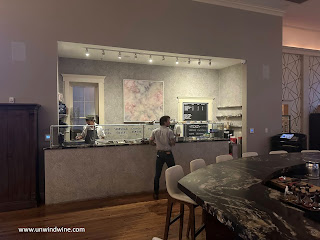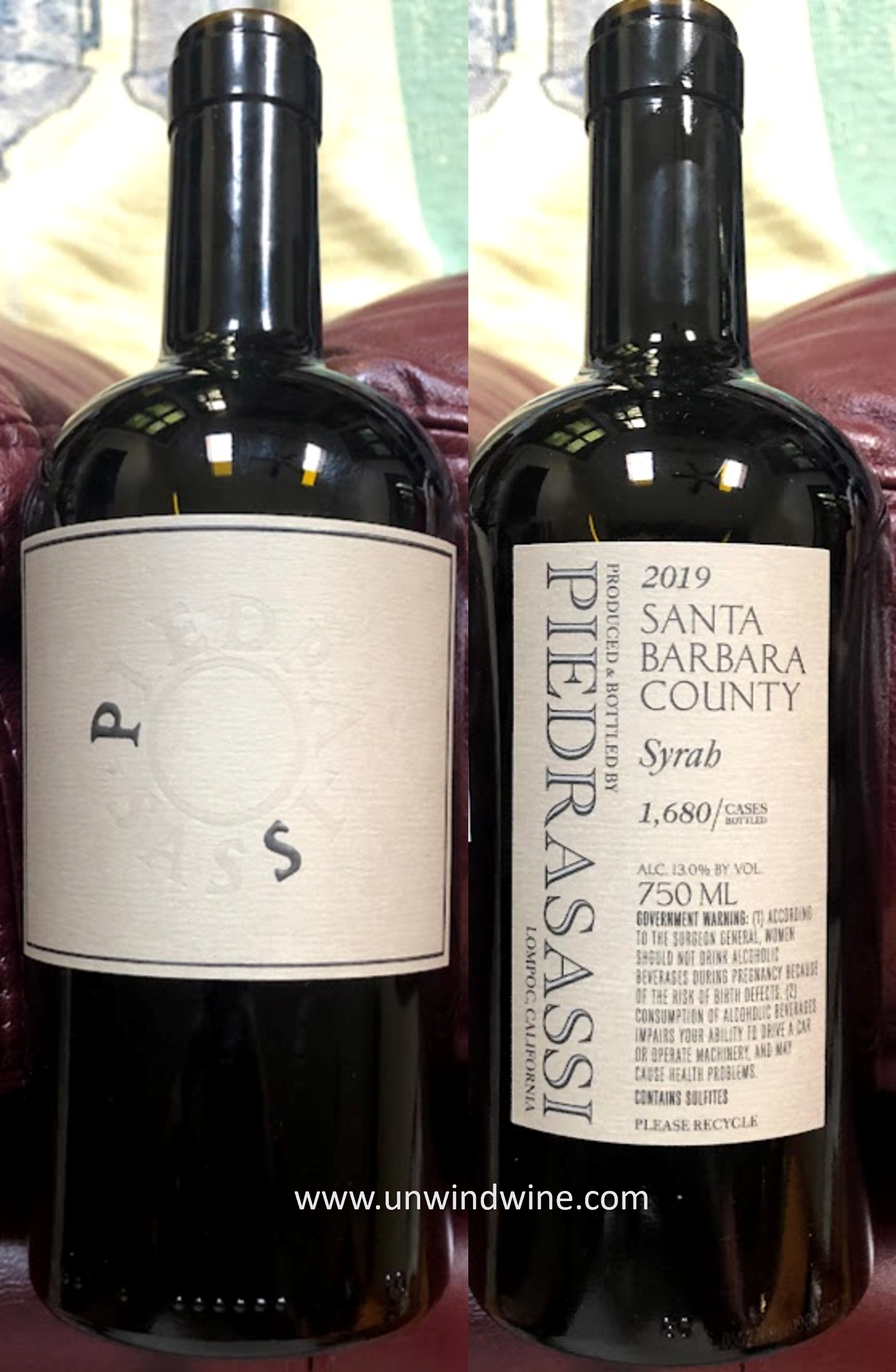Patrick Jasmin “La Giroflarie” Cote Rotie Rhone at Husk Restaurant in Savannah, GA
Visiting Savannah (GA) for a getaway and mini-family reunion with Sister Jan from So-Cal, we dined at several local fine dining eateries, Chive, The Olde Pink House, Rhett, The River House, and Husk.
We also did the Savannah food tour in the afternoon, a walking tour of sections of the city with an overview of several food examples of Savannah coastal southern cuisine.
The NDG restaurant portfolio includes Husk (Charleston, SC; Nashville, TN, and Savannah, GA), Minero (Johns Island, SC; Atlanta, GA), and Delaney Oyster House (Charleston, SC).
NDG has been recognized by Bon Appétit for “2011 Best New Restaurant in America” for Husk Charleston, as one of GQ’s “12 Most Outstanding Restaurants of the Year”, an Esquire “Best New Restaurant in America” in 2014 for Husk Nashville, and McCrady’s named one of “America’s Best Restaurants of 2016” in Wine Enthusiast.
We were advised to dine at Husk in Charleston by friends there but it was not open the days we were available when we were in town. So, we targeted Husk in Savannah for our trip there this week.
We dined in the bar-room with high ceilings and large windows, spacious seating along both walls surrounding the bar, the walls adored by modern brightly colored artwork.
One wall presents a large abstract painting featuring the grid city map
of Savannah with its famous square parks centering each neighborhood.
Husk Savannah focuses on preparations that represent the essence of Southern food that highlight the unique ingredients of coastal Georgia.
They offer a broad selection of Oysters and a Raw Bar with selections from the Southeast from Virginia, the Carolina's Georgia and Florida.
The dinner menu is somewhat limited featuring offerings of Georgia Shrimp and Grits, Smoked Cobia, Roasted Chicken Breast, Smoked Pork Porterhouse and Prime New York Strip.
The selection of 'Sides' is limited with three offerings, Carolina Gold Rice, Wakefield Cabbage and White Lily Biscuits.
For a starter we shared from the limited selection of four 'Firsts', the Selection of Southern Cheeses with Spiced Pecans, Hibiscus Honey, Blueberry Preserves and toasted Baguette and Pimiento Cheese with Benne Crackers and Husk Pickles, and from the sides selections, the White Lily Biscuits, named for the fineness of their flour.
Husk offers an extensive imaginative wine list that showcases 'artisan producers, small productions, and rare finds, grouped by terroir and soil type, rather than the traditional classifications of political geography or grape varietal'. They also feature a boutique wine program emphasizing organic and bio-dynamic, family-style producers who share the restaurant’s focus on environmental preservation. Lastly, they also feature three wines created and bottled in Husk’s own vineyard in Valle de Uco, Mendoza, Argentina.
The wine list offerings includes a selection of WBTG - Wines By The Glass - a dozen white, sparkling and Rose' wines and ten Red Wines. The Bottle wine list is extensive covering forty pages including a dozen NV Champagnes and Sparkling wines, and ten Vintage selections.
The White Wines offered include French Burgundies featuring twenty selections creatively listed geographically from North to South, five other French, seven from California, eight from Germany (listed North to South), and selections from Spain (seven), Greece (3), Italy (3) and the Southern Hemisphere (five).
The Red Wines offered a broad selection of French, listed by Region, geographically North to South from Burgundy (12), Beaujolais (4), Northern Rhone and Languedoc (6), Loire (3), Bordeaux (8), and Spain (3).
They offer American Reds, listed Light to Bold; from California (18) and Oregon (3), Italy (8), Germany (3), Austria (2), and the Southern Hemisphere (3).
There are a dozen dessert wines including ultra premium Château d'Yquem Sauternes, Bordeaux (1998) offered at $38 per ounce.
Then there is also an extensive list of a half dozen pages of Whiskeys, Rye, Agave, Tequila, Gins, Rums and other specialties.
The wine prices were a bit crazy, all over the map, offering numerous selections at the customary 2x retail price, but then from Bordeaux they offered some of our favorite producers such as Château Ducru Beaucaillou and Château Margaux, but featuring their second labels, Croix de Beaucaillou (@ $245), and Pavillon Rouge (@ $600), prices more appropriate for their Grand Vin rather than their 'second' wines, such that the effective price is four to five times retail price, almost as if they're confused about the labels, or confusing unsuspecting patrons!?! But then, anyone ordering a $300 to $600 bottle of wine is most likely a knowledgeable consumer, or someone with more money than sense or knowledge, based on these prices. Other Bordeaux were similarly more than customarily priced, Château Pontet-Canet 5ème Grand Cru Classé 2015 at $385, and Château Giscours 3ème Grand Cru Classé, 2015, $225, both offered at about three times retail.
In the end, we found and ordered a delightful Northern Rhone Syrah from the Domaine of Patrick Jasmin, “La Giroflarie” Côte-Rotie 2019, at $125, an appropriate 2x retail offering, providing reasonable QPR (Quality Price-Ratio) considering its good quality and ratings. It was a nice pairing with Bill's Porterhouse and my New York Strip steak.
For the ladies, we ordered BTG - Buy The Glass, Obsidian “Poseidon Vineyard” Chardonnay, 2021, from Carneros, Napa Valley, California, the only California Chardonnay on offer! It was 'okay', per the girls, a decent complement to their entree of Shrimp and Grits.
I ordered the grilled New York Strip steak and Bill ordered the Smoked Porterhouse Pork, both artfully prepared and presented.
The girls' Shrimp and Grits entree was lackluster and did not compare with those that we had on the Savannah food tour earlier in the day at the trend-setting eatery at Andaz Savannah at 22 Square.
Our wine selection -
Domaine (Patrick) Jasmin “La Giroflarie” Northern Rhone Côte Rôtie Syrah 2019
This is a classic example of 'old world' (France, Italy) vs. 'new-world' (US) labeling where they feature the locale source of the grapes rather than the variety of grapes and producer name on the label.
Côte-Rôtie is a Appellation d'origine contrôlée (AOC) in the northern Rhône river valley wine region of Southern France. The vineyards are located just south of the village of Vienne. The vineyards' terroir are steep slopes facing the river and are known for their picturesque stone walls, so common in the region. The name Côte-Rôtie can be roughly translated in English as "the roasted slope", referring to the long hours of sunlight that the steep slopes receive.
This is from Patrick Jasmin, a fourth generation winemaker, who took over from his father Robert (after his sudden death) in 1999. Patrick's Great-Grandfather, Alexandre, was the chef at Château Ampuis and was granted some vines for his services to the estate in the early 1900's. The property was historically one of the original domaines that started to bottle their own Côte Rôtie over 100 years ago.
Today, Patrick farms 13 acres of vines located in 12 parcels in 8 separate climats or lieu-dits spread across both escarpments of the Côte Rôtie appellation – the Côte Brune and the Côte Blonde.
The name 'La Giroflarie' is used to distinguish this principal cuvée from a special cuvée called 'Olea' that Patrick first made in 2015. La Giroflarie is an historic name for the Côte Baudin lieu-dit.Patrick blends into this label approximately 96% Syrah and 4% Viognier in this classic Côte Rôtie, and produces two cuvées of Côte Rôtie, sourced from 11 different parcels spread across the appellation. He also produces a number of IGP (Vin de Pays) bottlings.
Patrick's
extensive vine-holdings allow him a sufficient production of fruit
from which to select to blend and his wines are known for a laudable fine integration
of fruit and tannin earning him a reputation for wines described as the 'most
Burgundian' wine of the appellation.
Patrick Jasmin's Côte-Rôtie is aged for up to 2 years in oak barrels
(with up to 25% being new, originating from France, Russia & the
US). Half of the wine is racked into 228 litre barrels and half into
590 litre demi-muids.
Approximately 23,000 bottles are produced in a typical vintage.
This label release was rated 93 points by
According to the pundits, this Côte-Rôtie from Patrick Jasmin is known as one of
the most terroir-expressive Northern Rhône Syrahs and one of the greatest values in the category.
Dark purple colored, full bodied with full, round, concentrated black currant fruits with tones of smoked bacon and cola flavors accented by floral, cassis, and notes of spice and pepper with fine grained tannins on a long finish. A great example of Côte-Rôtie, high achiever with decent value.
RM 93 points.
https://www.cellartracker.com/wine.asp?iWine=3816597
https://husksavannah.com/


































